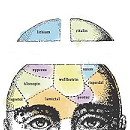In France, the prescription of psychotropic drugs to children has remained very moderate for a long time because of the strong influence of psychoanalysis on child psychiatry. But in recent years this influence has diminished as neuropediatricians do not have this culture, and there is a worrying increase in the number of children on psychotropic drugs and especially on methylphenidate (Ritalin). For practitioners who do not a priori refuse to prescribe methylphenidate to children, the essential question then becomes: “Is there a good use, an ethical use of methylphenidate?”
Methylphenidate (MPH) offers an opportunity because it “works,” i.e., it has a positive effect on attention, which allows the individual to concentrate better, especially when carrying out tedious tasks. It also works very quickly, giving the impression of a “miraculous” change, or at least a breaking away from the previous symptomatic situation which is often a vicious cycle of negative synergy that brought much suffering to both the individual and those around him. There is nothing surprising about this, given that the substance is an amphetamine derivate.
Also, attention, which is the target of MPH’s action, has become essential and highly valued in our society, for several reasons:
-
Pedagogical: first, because without attention there is no learning and it is impossible or at least very difficult to fulfil the requirements of schooling or society, which brings the risk of isolation or even discrimination, reduced self-esteem or even depression, along with compensatory behaviours that are always harmful and sometimes dangerous. Attention has become a prerequisite of primary schooling.
-
Economic: the attention of customers must be captured in order to sell them products. However, modern sources of information and communication create so many demands on our attention that it has become a precious commodity. In our liberal society, when something acquires economic value, everyone becomes interested in it.
-
Neuropsychological: attention is linked to the executive functions and thus to the “brain in the brain,” and this stimulates research studies and scientific literature on attention and its disorders because they are considered “up to date” and “cutting edge,” dealing with a niche and fashionable area of research.
In addition, the prescription of MPH is an opportunity because its quick action and “miraculous” effect are advertised virally on social media and networks; it seems to respond to a certain shift in our thinking and in the demands addressed to child psychiatry. The fear of academic failure requires an efficacious symptomatic response, which boosts the prescription of a “learning stimulant.”
Lastly, it is an opportunity for clinical practitioners because we the psychiatrists and child psychiatrists have a very limited and partially inefficacious pharmacopoeia; it is therefore understandable that we pounce on methylphenidate like the “good bread,” because it is the latest great class of psychotropic drugs.
However, the benefits that methylphenidate can offer are offset by its overprescription. Even though it is extremely unlikely that in France we would reach the kinds of percentages we see in the USA, where in some states nearly 10% of children are treated with MPH or other psychostimulants not used in France, overprescription is highly probable. Why?
-
First because of overdiagnosis, given that the prescription of MPH follows a diagnostic operation. And the diagnosis that prompts the prescription, ADHD, tends to be overdiagnosed because it is based on non-specific indices that are often hard to distinguish from normal variation, with a number of comorbidities.
-
Despite its dubious validity (absence of scientific evidence or biological markers, although there have been nearly 40,000 scientific studies devoted to ADHD, costing millions of dollars), its poor reliability, and the many confusing factors such as immaturity and so on, the diagnosis of ADHD has become a social fact simply because it is useful. It puts a medical label on mental suffering, on learning difficulties or dropping out of education; it avoids the bothersome diagnostic drift; by evoking a brain problem it lessens the parents’ guilt; it gives access to welfare benefits based on a recognized disability; it is supported by the “propaganda” of pharmaceutical laboratories (in the early 1990s, psychostimulants represented less than 100 million USD globally, while in 2012 this number had risen to over 5 billion USD) and also by some user associations which may have conflicts of interest; and by medicalizing the problem, it can also help occlude the social, educational and pedagogical issues that correlate with the observed problems.
-
The Diagnostic and Statistical Manual, the US diagnostic tool that has now become globalised, has reduced the threshold of ADHD from one version to the next, thus encouraging overdiagnosis. Also, and especially, starting from its fifth version ADHD has been classified as a neuro-developmental disorder. In other words, ADHD is no longer an area of child psychiatry, it has been “neurologised.” This logically boosts the pharmacological response, with behavioural “additions” of how to interact with the child — which, experience has shown, are not sustainable, because of the magic pill that is expected to fix everything, which demobilizes all the actors and parents in particular.
-
The social representation of MPH is deformed: the expectations are excessive because it also has side effects, its use in adolescence is a source of depersonalization, not much is known about its long-term effects and it is not a remedy against either addictive behaviour or academic difficulties. It cannot alone stabilize someone’s development, and on average its efficacy only lasts two years. Not to mention its misuse or abuse which have become alarmingly frequent.
So what are the alternatives? Some pointers:
-
Knowing how to use MPH as part of a diversified therapeutic approach based on serious clinical data.
-
Including psychopathology in the training of mental health practitioners alongside the standardised tools, if only to be able to identify underlying psychosis, to do more in-depth work in specific cases, to be able to listen more carefully, to be able to use different psychodynamic and behavioural therapies, to not try to fit too many things into a vague diagnostic category and to find the right balance between idiosyncrasy and standardisation. ADHD should not become a lazy diagnosis of simply applying protocols to a situation of mental suffering. We must reject any patronising attitude and instead try and create a partnership with the parents.
-
Practitioners should be trained to do research with a scientific attitude, to distinguish between “the rhetoric of promise and the patency of proof,” as François Gonon puts it — to learn to distinguish between correlations and causalities, to sort through research studies and identify their key methodological or statistical biases — but also to contextualise the discourse on neuroscience, including the causes of distortions such as researchers’ careers, media interest of journal editors and the reputation of different universities and research centres, in order to not fall prey to “neuromania” and the distortions it introduces into the discourse about the findings derived from neural imagery. This training is indispensable in an age of fake news and post-truth.
And also, beyond clinical practice:
-
Pedagogical innovations that can reduce ADHD rates are also very important
-
Life hygiene, exercise and nutrition
-
The fight against social injustice
-
Educational measures to limit screen exposure, etc.
Simply put, there is an entire programme to avoid importing the American disaster and exposing our schools to the greed of pharmaceutical laboratories.















Recognizing that we do have a disaster in the USA, and that it is being imported, I would not blame any country for using legislation to stop it at home. Legislation, although unmentioned above, is probably the most effective means to avert this sort of thing. I understand, too, why it wouldn’t be considered, especially with the prestige of experts guiding the course, but I also understand that it might be about time somebody took matters into account. You’ve got all sorts of countries, wary of what’s going on, ultimately succumbing to the clout and the money of the drug companies and bio-psychiatry–a very child unfriendly combination. Adult unfriendly, too. Creeping calamity, in many places around the world, rather than being averted, and despite forewarning, has arrived on their shores. One has to wonder how long mental health professionals working in France might be able to keep the wolf at bay.
Report comment
Comment removed for moderation
Report comment
Nice try, John, but I’m afraid Ciba’s a Dutch company. Its plant and offices are likely to be in the Netherlands, somewhere- the Dutch are likely to consider such acts to be acts of war.
Report comment
I have always felt the drugging of children to be an evil most pronounced. They are only maladjusting these children to the rigors of Western schooling.
Report comment
I agree, “the drugging of children [is] an evil most pronounced.” I hope France, and the rest of the world, sees through the scientific fraud that is today’s DSM iatrogenic illness creation system, before their countries are also destroyed, due to psycho/pharmaceutical greed and lack of ethics.
Report comment
You say there are situations when stimulants can be helpful. But they are almost always given long-term, and long term studies consistently demonstrate worse prognosis in those taking them, in relation to academic performance, ADHD “symptoms”, and development of other problems such as substance abuse (nearly 3 times average rate) and suicide (5 to 10 times average rate). Even the short-term apparent gain, which is merely from their calming (tranquilizing) effect, which gets children to sit in their chairs and be less disruptive, is not something I would ever consider helpful, except maybe to an overwhelmed teacher. And this is why medicated children will always need to use chemicals of some type – they were prevented from learning how to manage their own impulses and feelings, since the drugs did it for them. So there is no legitimate reason to ever prescribe these drugs.
Report comment
Getting drunk can sometimes be helpful, especially for anxiety. That doesn’t make it a medical treatment. Sometimes people like what drugs do, sometimes they don’t. Altering the mind and emotions with substances is as old as humanity. Pretending we’re “treating” a “medical condition” is the big issue.
Report comment
As for the “paedogogical” effectiveness of stimulants, this is an illusion. Every review of long-term literature on stimulants confirms that there is NO academic or social benefit from long-term stimulant use, including completion of grades, academic test scores, dropout rates, and college enrollment. While I appreciate your description of the many possible causes and alternative approaches for this particular behavioral syndrome, you do your readers a grave disservice not to mention that any academic benefits that may accrue are small and fleeting, according to the Raine study, the MTA study, the Quebec ADHD study, the Oregon State University Medication Effectiveness study, and the Finnish/US comparison study, just to name a few. The very best reason NOT to consider stimulants for your kids is that in the long run, THEY SIMPLY DO NOT WORK, at least not if you care about outcomes beyond reducing adult frustration.
Report comment
I would also challenge the author to define “overdiagnosis” when the ADHD diagnosis is totally subjective. The reason the diagnostic boundaries can expand is because they are simply made up by a committee of psychiatrists who vote on what they should be. There can be no “overdiagnosis” without an objective standard, and lacking one, the whole concept of diagnosis becomes meaningless.
Report comment